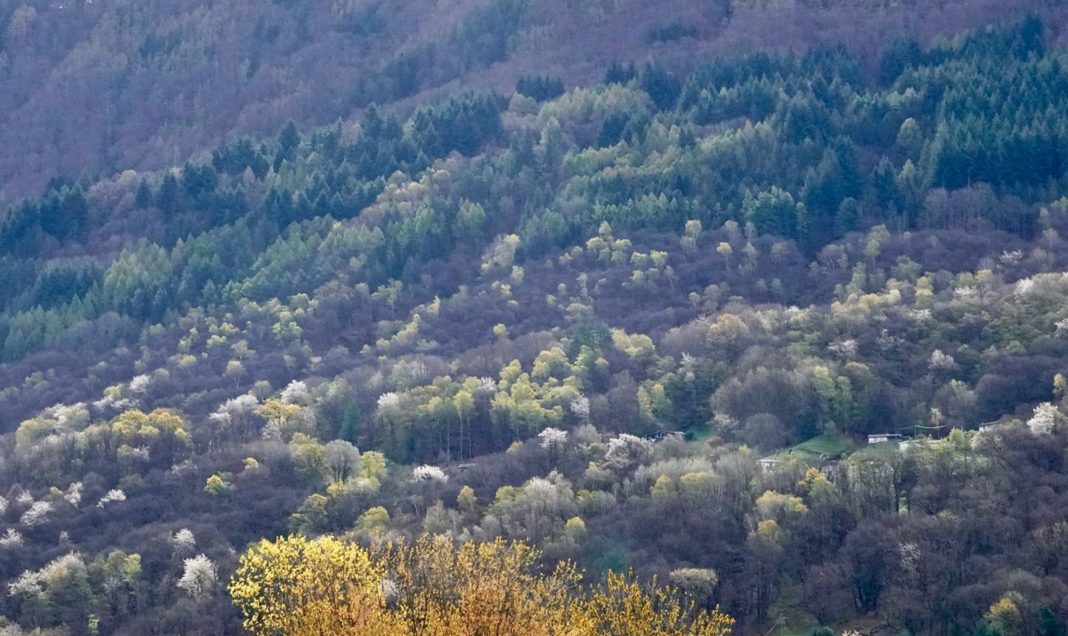Prof Dr Andreas Rigling and Dr Valentina Vitali highlight the importance of tree diversity for enhancing forest resilience in an uncertain future
Accelerated global change and increasing uncertainties
The famous quote by Niels Bohr, Nobel Prize winner for physics, “Prediction is very difficult, especially about the future”, applies directly to forests in times of global change, their development, and the ecosystem services they provide. Forests face unprecedented rates of change, creating considerable uncertainty in all aspects of forest development and management. Since forestry decisions are made with time horizons of decades to centuries, the challenge of predicting future climatic and ecological conditions is immense.
Advances in understanding ecological processes, mechanistic and species distribution models, and projections of environmental change have enhanced our ability to develop scenarios and predict change. Yet substantial uncertainties remain, highlighting the need to rethink sustainable forest management to strengthen resilience and secure the long-term provision of ecosystem services.
Managing forests for the coming generations
The goal of sustainable forest management is to ensure healthy, resilient forests for future generations that meet society’s needs through provisioning (wood, water), supporting (nutrient cycling, habitat), regulating (climate, water purification), and cultural services (recreation, aesthetics). Sustainable management aims to maintain these functions over the long term.
The challenge is that these long-term conditions are changing dramatically. Uncertainties include slowly shifting climate trends, altered weather characteristics such as average temperatures, precipitation, and seasonal snow cover, as well as more frequent extreme events, including droughts, heatwaves, late frosts, storms, fires, pests, and diseases.
Beyond climate, demographic change, evolving societal demands, and the shift toward a circular economy will shape the future role of forests and wood products. It is, therefore, uncertain how much wood of what quality forests will provide, and how future markets and industrial requirements will develop.
Integrated forest management combines these perspectives and explicitly takes into account ecological, economic, and social aspects, dealing with uncertainties, mitigating climate impacts, building resilience, and drawing on natural processes that have proven effective over thousands of years.
Tree species diversity as a key to forest resilience
Among the toolbox of measures promoted by integrated forest management, increasing tree species diversity is a particularly effective and broadly applicable strategy. It buffers forests against both known and unknown stressors, can be applied across ecosystems and silvicultural traditions, and supports biodiversity.
Diverse forests mitigate risks through functional complementarity and response diversity – the “portfolio effect” familiar from economic theory. In forest terms, greater diversity lowers the risk of all trees being equally affected by a disturbance. This also increases the likelihood that some of the wood produced today will remain valuable in the future, even if demand for wood products changes fundamentally.
Effects of tree species diversity
The effects of greater species diversity are not universally positive. Research shows positive, neutral, or negative impacts on resistance, resilience, and productivity depending on the species identity and environmental conditions. Species interactions may result in facilitation or competition, which dynamically shift depending on resource availability. Nonetheless, at the landscape scale, diversity reduces the likelihood of large-scale forest failure. For this reason, enhancing diversity is widely accepted as an effective measure to increase resilience and sustain biodiversity in a future marked by uncertainty.
A key question remains: which tree species and combinations can thrive under current conditions and withstand future changes, thereby strengthening resilience in the long term? To address this, some countries have launched large-scale, long-term trials testing different provenances of native and non-native species during regeneration under diverse site conditions and ecological gradients.
In Switzerland, for example, 56 experimental plantations have been established, ranging from lowlands to mountain sites. In parallel, older trial plantations are being analysed to evaluate how species mixtures and mature trees have responded to recent extreme heat and drought years.
Such research will provide important guidance in the coming years on suitable future tree species portfolios and the relationship between diversity and resilience.
Minor native versus non-native tree species
The debate on diversity also highlights the role of minor native species and the careful inclusion of non-natives. Promoting less common native trees can enhance structural and functional diversity without undermining ecosystem stability. They contribute to recreation, aesthetics, and habitat quality, while improving resilience to stressors.
Integrated and nature-oriented forest management focuses primarily on native species, sometimes supplemented by non-native but non-invasive species for specific purposes, such as timber production or protection against natural hazards. Yet, global change will fundamentally transform forests, leading to range shifts, invasions of NeoBiota, extinctions, novel species mixtures, and altered interactions. As the distinction between “natural” and “non-natural” shifts, so too does the debate about which species to favour.
Two contrasting perspectives dominate: one argues that “nature will adapt on its own, as it always has,” while the other warns that climate change is occurring so rapidly that vital ecosystem services are at risk unless foresters proactively guide adaptation. This controversy highlights the importance of balanced, evidence-based discussions. Platforms such as the Integrate Network or the new TriNational Forest Lab facilitate exchange between practitioners, policymakers, and scientists, fostering the targeted and respectful dialogue necessary to develop differentiated, site-specific, and sustainable solutions.
References
- Integrate Network: https://integratenetwork.org/
- Krumm F, Schuck A, Rigling A (eds) (2020) How to balance forestry and biodiversity conservation – A view across Europe. European Forest Institute EFI, Swiss Federal Research Institute WSL, 650 pp. https://www.doi.org/10.16904/envidat.196
- Markowitz, H.M. (March 1952). “Portfolio Selection”. The Journal of Finance. 7 (1): 77–91. https://doi.org/10.2307/2975974.JSTOR2975974.
- Test plantations: Streit, K., Brang, P., & Frei, E. R. (2024). The Swiss common garden network: testing assisted migration of tree species in Europe. Frontiers in
Forests and Global Change, 7, 1396798 (15 pp.). https://doi.org/10.3389/ffgc.2024.1396798 - The TriNational Forest Lab: https://trinational-forestlab.wsl.ch/en/
- Transformit project: https://transformforests.eu/
- The Copera experimental plantation: https://fe.ethz.ch/en/research/forest-growth-global-changes/IntroSpec.html
- Betting on diversity: https://fe.ethz.ch/en/research/forest-growth-global-changes/rarespec.html


